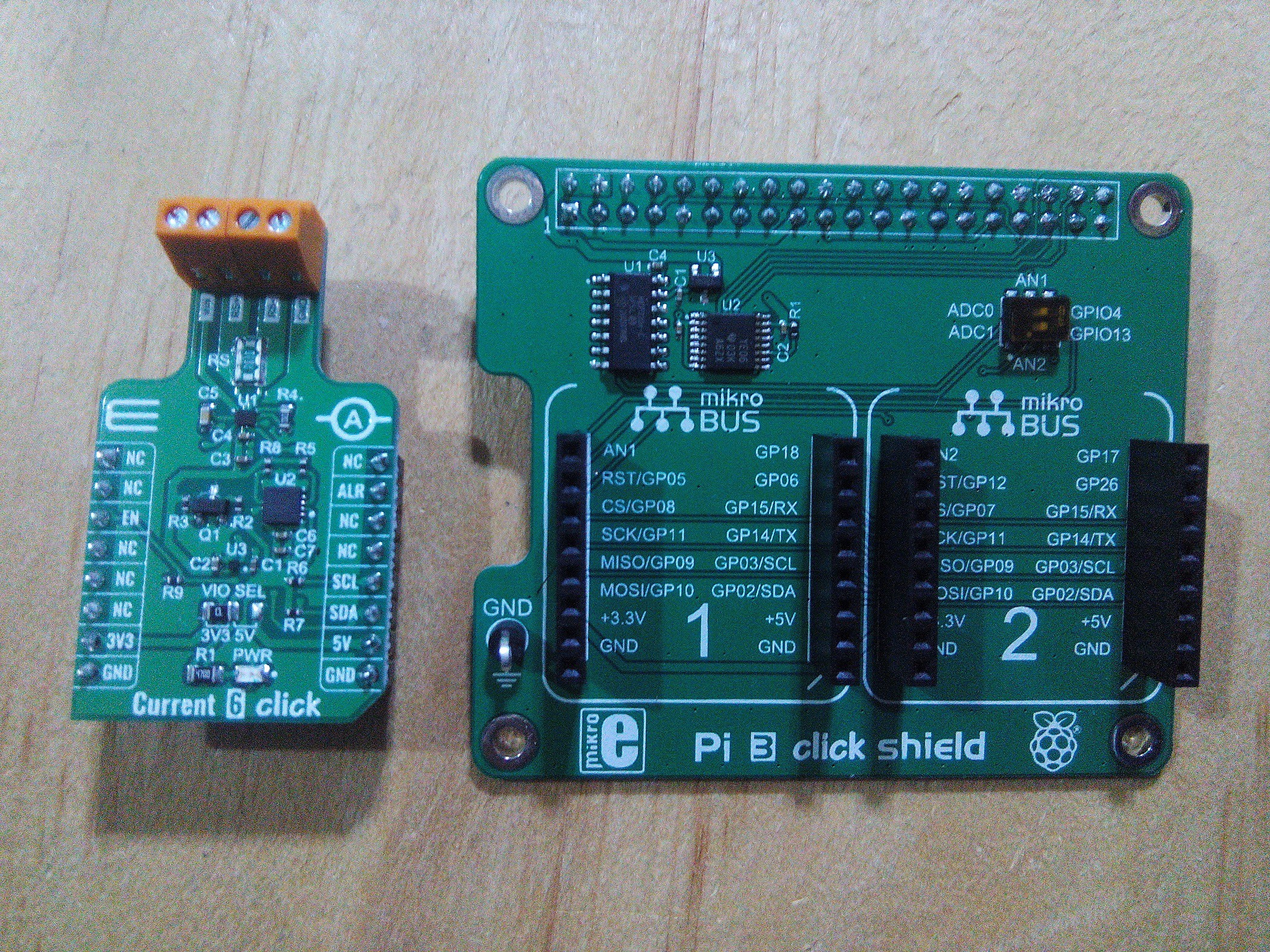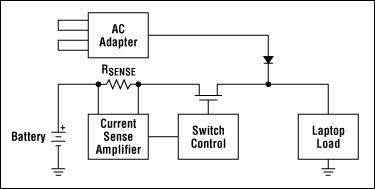BIDIRECTIONAL CURRENT-SENSE AMPLIFIER
At the time of writing this blog post I started experimenting with using Current 6 Click is a very accurate current measurement Click board™, based on the ACS723 IC. This IC is a galvanically isolated current sensor, which utilizes the Hall-effect principle. Its most distinctive feature is its very low series resistance of only 0.65 mΩ, which makes this device a nearly-perfect ammeter.

Current 6 Click is a compact add-on board providing a precise and accurate current sensing solution. This board features the MAX40080, a fast-response bi-directional current-sense amplifier from Analog Devices. The device features ultra-low 5uV input offset voltage, very-low 0.2% gain error, and includes an analog-to-digital converter with programmable sample rate and 12-bit resolution featuring I2C compatible interface. It also features a wake-up current-threshold and auto-shutdown mode when the I2C is inactive, both designed to minimize power consumption. The current-shunt monitor can measure voltage signals on common-mode voltages ranging from -0.1V (ground sensing) to 36V, independent of the supply voltage. This Click board™ delivers higher performance to industrial control and automation applications, load and power supplies monitoring, telecom equipment, and many more.

Many current-sense applications require bidirectional current-sensing capabilities. For instance, when a laptop is plugged into an AC power line, the AC adapter supplies power to the laptop and charges the battery. The battery's charge current is monitored to ensure that the battery does not overheat and that the total input power drawn from the AC adapter does not exceed UL-mandated limits. Similarly, the battery discharge current is monitored for fuel-gauging/active power management on the load device when the AC adapter is not available and battery capacity needs to be conserved. Figure below shows a typical current-sense amplifier implementation in a battery-charging/-discharging application.

SOLAR PANEL CHARGER
I also have plans to add commercial solar panels to this system like the one shown below.

This solar panel charger is a lightweight, ultra thin (2mm), and affordable power solution. This panel comes with a 5V USB connection port. The panel is capable of 10 watts in the open sun with a peak power output around 6V at 1700mA. This panel features a monocrystalline silicon material to provide a 20% high photoelectric conversion rate. With a frosted surface makes the panel scratch resistant and more durable. This also has a water resistant epoxy resin seal. The panel is slightly flexible making it considerably lighter than equivalent glass based panels. Because it is light weight this panel is designed for temporary installation on windows (that's what the included suction cups are for) but can be permanently installed. This panel weighs 3.3648 ounces and measures 259.60mm x 139.69mm x 2.46mm (9.83mm thickness at the USB port).
LAST WORDS
- After first experiments I faced some issues that cost me a lot of time and I also found some mistakes in datasheet which I will report to provider bidirectional current sensor Maxim. I am currently testing my own library and I plan to post some first thoughts soon.
- I am still waiting my solar panels for my more advanced experiments, since I just have one piece to make simple tests. In the meantime, I ordered and received required components.
- For this blog it is totally all. Thank you for reading it and stay tuned. If you find any inconvenience or other issue in my formulas, computation or somewhere else, feel free to write a comment. I also like to hear any feedback.
 Guillermo Perez Guillen
Guillermo Perez Guillen
Discussions
Become a Hackaday.io Member
Create an account to leave a comment. Already have an account? Log In.